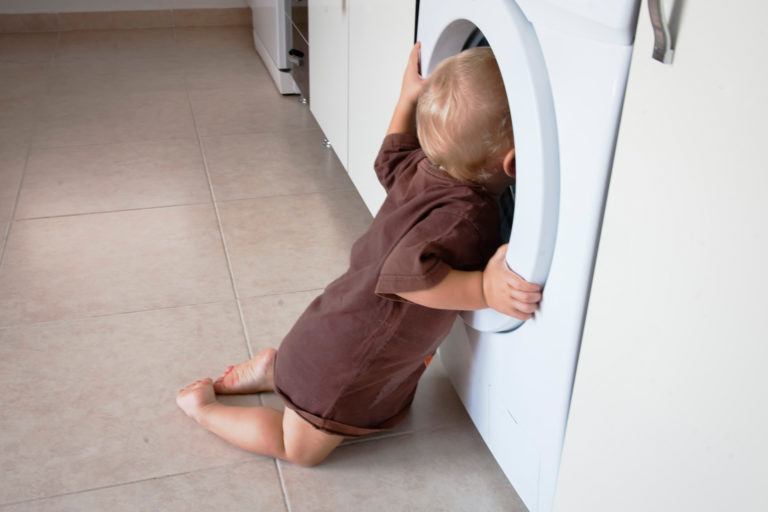
Quick Tips
You wanted to be an eco-conscious parent, save money, and keep chemicals away from your baby’s skin—so you chose cloth diapers. Good call! But now, you’re staring down a pail of… let’s call it ‘well-used’ fabric, wondering how to get them clean without turning your washing machine into a biohazard. Fear not! Cleaning cloth diapers is easier than you think, as long as you follow the right steps.
Why Proper Cloth Diaper Cleaning Matters
Unlike regular laundry, cloth diapers require special care to remove bacteria, odors, and stains without damaging absorbency. Using the wrong detergent, skipping essential steps, or washing too infrequently can lead to stink buildup, ammonia burns, and leaks. Keeping cloth diapers clean ensures they stay soft, absorbent, and irritation-free for your baby’s delicate skin.
What You’ll Need to Wash Cloth Diapers
Before diving into the process, gather the essentials:
- Cloth diaper-safe detergent – Free of fabric softeners and fragrances.
- Diaper sprayer or rinse bucket – For pre-rinsing solids.
- Wet bag or diaper pail – To store dirty diapers before washing.
- White vinegar or baking soda – Helps with odor and buildup (optional).
- Wool dryer balls – Keeps diapers soft without chemicals.
- Drying rack or clothesline – Sunlight naturally bleaches stains.
How to Clean Cloth Diapers in 6 Steps
1. Dump the Solids (Without Losing Your Mind)
Before tossing diapers into the wash, remove any solid waste. If your baby is exclusively breastfed, you can skip this step—breastfed poop is water-soluble and washes out easily. For formula-fed babies or older infants, use a diaper sprayer to rinse off solids directly into the toilet, or shake off excess waste into the bowl. A designated rinse bucket can also help pre-soak especially soiled diapers. This step prevents buildup in your washer and helps maintain a deep clean.
2. Store Dirty Diapers the Right Way
Until wash day, store dirty diapers in a breathable wet bag or diaper pail with good airflow. Avoid airtight containers, as they trap moisture and create the perfect environment for bacteria and mildew. If odors become overwhelming, sprinkle a little baking soda at the bottom of the pail to absorb smells. The goal is to contain the mess without turning your laundry area into a science experiment.
3. Run a Cold Rinse Cycle First
Before washing, run a cold rinse cycle (no detergent) to remove urine and loosen any leftover solids. This prevents hot water from setting stains and keeps detergent from working on already-filthy water. Think of this as a “pre-wash” that gets rid of the worst grime so the main wash can do its job properly.
4. Wash on Hot with the Right Detergent
After the rinse, run a long, hot wash cycle with an appropriate cloth diaper-safe detergent. Choose a detergent free of fabric softeners, brighteners, and fragrances, as these can coat fibers and reduce absorbency. Powdered detergents often work better than liquid for cloth diapers, as they rinse out more easily. If dealing with ammonia buildup, add ½ cup of white vinegar to the rinse cycle to neutralize odors and break down residue. Wash no more than 12–15 diapers per load to ensure thorough cleaning.
5. Rinse (Again!) to Remove All Detergent
After the main wash, run an extra rinse cycle to remove any lingering detergent. Residue left behind can cause rashes, irritation, and repelling issues (where the diaper stops absorbing liquid properly). If you see bubbles in the rinse water, you may need an additional rinse. Clean diapers should come out smelling like nothing—if there’s any lingering odor, repeat the rinse cycle.
6. Dry for Maximum Softness and Absorbency
For best results, air-dry cloth diapers in the sun, which naturally bleaches out stains and kills bacteria. If using a dryer, tumble dry on low or medium heat with wool dryer balls to soften fabric and speed up drying time. Avoid dryer sheets or fabric softeners, as they leave behind residues that reduce absorbency. Pocket diapers and covers should always be air-dried to protect the waterproof lining.
How Professionals Deep-Clean Cloth Diapers
Sometimes, regular washing isn’t enough, and professional cleaning methods may be needed:
- Strip washing – A deep-cleaning method that removes detergent buildup, ammonia, and hard water minerals.
- Enzyme soaks – Breaks down protein-based stains and odors.
- High-temp sanitization – Industrial laundering services use professional-grade detergents and heat settings to restore heavily soiled diapers.
- Oxygen bleach treatments – Removes stains without weakening fibers like chlorine bleach can.
If your diapers still smell funky after washing, they may need a strip wash (here’s how to strip cloth diapers).
How Often Should You Wash Cloth Diapers?
- Every 2–3 days – Prevents bacteria and ammonia buildup.
- Immediately – If a diaper is excessively soiled or soaked with urine overnight.
- Weekly deep clean (if needed) – If diapers develop persistent odors or stains.
Final Thoughts
Washing cloth diapers isn’t as daunting as it seems! With the right technique, you’ll keep them fresh, absorbent, and irritation-free for your little one. Stick to a simple wash routine, and you’ll never have to deal with smelly, stained diapers again.
For more laundry care tips, check out How to Wash Baby Clothes. Keep your baby’s essentials clean and comfy!